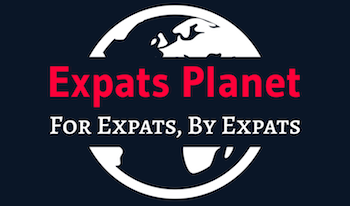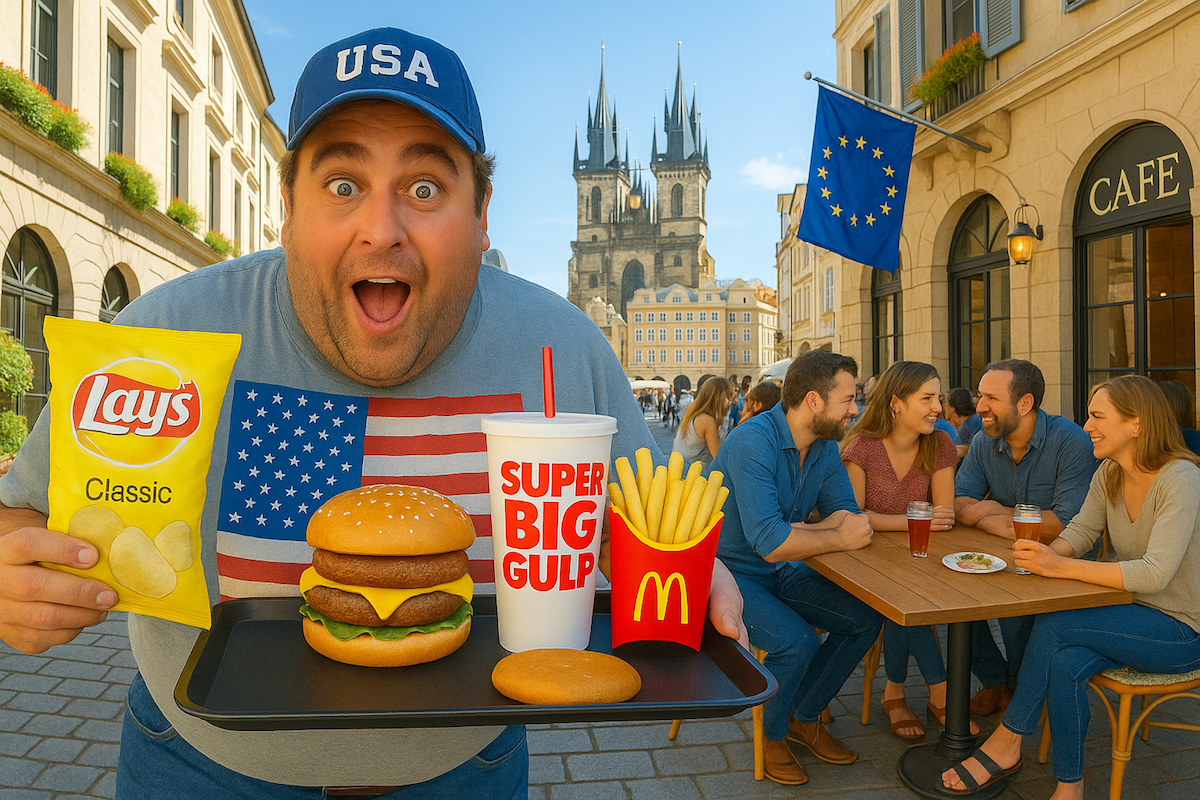Contents
- What Europe Took Off the Shelves That Americans Still Swallow
- 1. If It’s Legal, It Must Be Safe
- 2. Processed Food Saves Time Without the Health Cost
- 3. Artificial Sweeteners Are Harmless
- 4. Organic in the U.S. Means Clean
- 5. Calories In, Calories Out Is All That Matters
- 6. All Labels Are Regulated the Same Way
- 7. Europe Is Just Being Overcautious
- What Else Have You Swallowed?
What Europe Took Off the Shelves That Americans Still Swallow
These Industry Myths Are So Deeply Ingrained You Probably Still Believe Them
“Processed food is totally safe.”
“If it’s on the shelves, someone tested it.”
“The FDA would never let us eat something harmful.”
That’s what I thought, too… until I moved to France.
Within a week of arriving, my bread actually went stale after two days, which I took as a good sign.
The butter tasted like, well, real butter.
And the strawberries didn’t look like they were grown in a Franken-lab or taste like bland disappointment.
I wasn’t even trying to eat healthier.
I was just eating normal, everyday food from the supermarket.
Yet my stomach felt calmer, my energy more stable, and for the first time in years, I didn’t feel like I was digesting a lab experiment.
Then came Spain. Then Poland. Then Georgia.
And the pattern kept repeating itself: basic food tasted better, fresher, and didn’t come with the side effects I had just accepted as normal back in the U.S.
After years of living across Europe, I kept hearing the same question from whether it was from confused fellow Americans, my former students in Ukraine or fellow travelers swapping stories over beers from Dublin to Tbilisi.
Why does the exact same product taste and feel so different depending on which side of the Atlantic you’re on?
At some point, I stopped blaming jet lag and started digging for answers.
Well, here’s the truth: it’s not your imagination.
And it’s not just the ingredients, it’s the lies behind them.
Because what most Americans don’t realize is that we’ve been sold a narrative.
A very convenient one.
And in this article, I’m going to walk you through the seven biggest food industry myths that Europe exposes without even trying.
If you’ve ever eaten a box of cereal and wondered why it tastes like childhood and regret, this one’s for you.
1. If It’s Legal, It Must Be Safe
I used to believe this one too.
Then I moved to France and realized their food safety philosophy isn’t “Let’s see what happens” but more like “We’d rather not risk turning our population into lab rats.”
Over there, if an ingredient might be harmful, it’s either banned outright or slapped with a warning label big enough to make you think twice.
Meanwhile, in the U.S., we wait until something causes cancer in rats, disrupts human hormones, and shows up in every bloodstream study before we consider a recall.
Even then, it’s usually “voluntary.”
Lesson learned: Just because something’s legal doesn’t mean it’s safe, it just means the right lobbyist got paid.
Because in the U.S., profit is often prioritized long before public health ever enters the conversation.
2. Processed Food Saves Time Without the Health Cost
When I spent a few months in Spain, I grabbed a frozen meal from a local grocery store, half expecting it to taste like microwaved sadness.
To my surprise, it had recognizable ingredients and didn’t give me that weird bloated “what-did-I-just-eat” feeling I used to get back home from even the “healthy” options.
Back in the States, a frozen lasagna might save you 20 minutes, but it’ll cost you three hours of energy and possibly a week’s worth of gut stability.
What I figured out: The shortcut only works if it doesn’t set you back later.
In Europe, even shortcuts have standards.
3. Artificial Sweeteners Are Harmless
A former colleague of mine who taught in Poland once made the mistake of packing a suitcase full of “sugar-free” snacks from the U.S. for her semester abroad.
Big mistake.
Every time she offered them to her local friends, the response was some version of “Why would you eat chemicals that mess with your brain?”
Turns out, sweeteners like aspartame and sucralose are treated with a lot more skepticism over there. France, for instance, has warning labels on them.
The U.S., on the other hand? We just slap a “Zero Calories” label on it and call it a health product.
The eye-opener: Just because it says “diet” doesn’t mean it’s doing your body any favors.
Most of the time, “diet” just means cleverly marketed junk in disguise.
4. Organic in the U.S. Means Clean
When I lived in France, I remember buying carrots from a farmers’ market and being mildly horrified at how dirty they were.
I’m not talking about sanitation or hygiene, I mean the actual soil still clinging to them.
I then realized that dirt was a sign they hadn’t been pressure-washed, waxed, or chemically treated into submission.
In the U.S., the “organic” label can still sneak in certain pesticides, and if it’s processed, forget it.
You can have “organic” breakfast bars with enough sugar to make a horse act like it’s on Crack.
Meanwhile, in most of Europe, if it says “organic,” it actually means something, starting with how the soil is treated before anything even grows in it.
Here’s what shifted: The word “organic” is only as clean as the system behind it.
In the U.S., that system is built more for marketing than for meaning.
5. Calories In, Calories Out Is All That Matters
Back when I was living in Georgia, where food is basically a celebration served three times a day, I couldn’t believe how much bread, wine, and cheese people were eating.
By American logic, half the population should’ve been rolling down the cobblestone streets.
But they weren’t. And the reason became clear: their food was real, not a Franken-meal of synthetic additives, preservatives, and lab-engineered textures.
I stopped counting calories and started eating like a local, and somehow felt better.
What really matters: It’s not just how much you eat. It’s what your body is eating with it.
Because when your food comes loaded with chemicals, your body isn’t just digesting calories, it’s battling chaos.
6. All Labels Are Regulated the Same Way
In Spain, a fellow Pilgrim on the Camino De Santiago once pointed to the back of a juice box in a grocery store we were browsing around in and said, “Look at this. Every single ingredient is just fruit. No mystery words.”
I nodded and laughed, vaguely remembering the U.S. version of that same juice, which had “natural flavors” listed… followed by 15 things that sounded like rejected chemistry experiments.
In Europe, if it’s in the food, it’s on the label.
In the U.S., companies can hide ingredients behind phrases like “proprietary blend” or “natural flavors, which could mean literally anything.
The big difference: One system wants to inform you. The other wants to confuse you just enough to keep buying.
Because the more confused you are, the more profitable you become.
7. Europe Is Just Being Overcautious
I used to think so too. Until I looked around and realized that people in France weren’t obsessing over macros, buying detox teas, or lining up for colon cleanses.
They were just eating actual food. Slowly. With friends. And they weren’t miserable doing it.
Meanwhile, in the States, we call any regulation on food “government overreach.”
But maybe what we call freedom is actually just an open invitation for industries to put profit over public health.
Food for thought: Caution isn’t the enemy.
Sometimes it’s the reason people live longer, feel better, and don’t need a pantry full of supplements just to get through the week.
It’s not “over-regulation” that’s making people sick, it’s the illusion that none is needed.
What Else Have You Swallowed?
So much of what we believe about food in America isn’t science, it’s salesmanship.
And the more time I spent in Europe, the more I realized how many of those ideas were completely avoidable.
We didn’t just get sold a product.
We got sold a belief system.
Now that you’ve seen the differences, I want to know:
Which of these lies did you believe before reading this?
What shocked you the most?

David Peluchette is a Premium Ghostwriter/Travel and Tech Enthusiast. When David isn’t writing he enjoys traveling, learning new languages, fitness, hiking and going on long walks (did the 550 mile Camino de Santiago, not once but twice!), cooking, eating, reading and building niche websites with WordPress.

